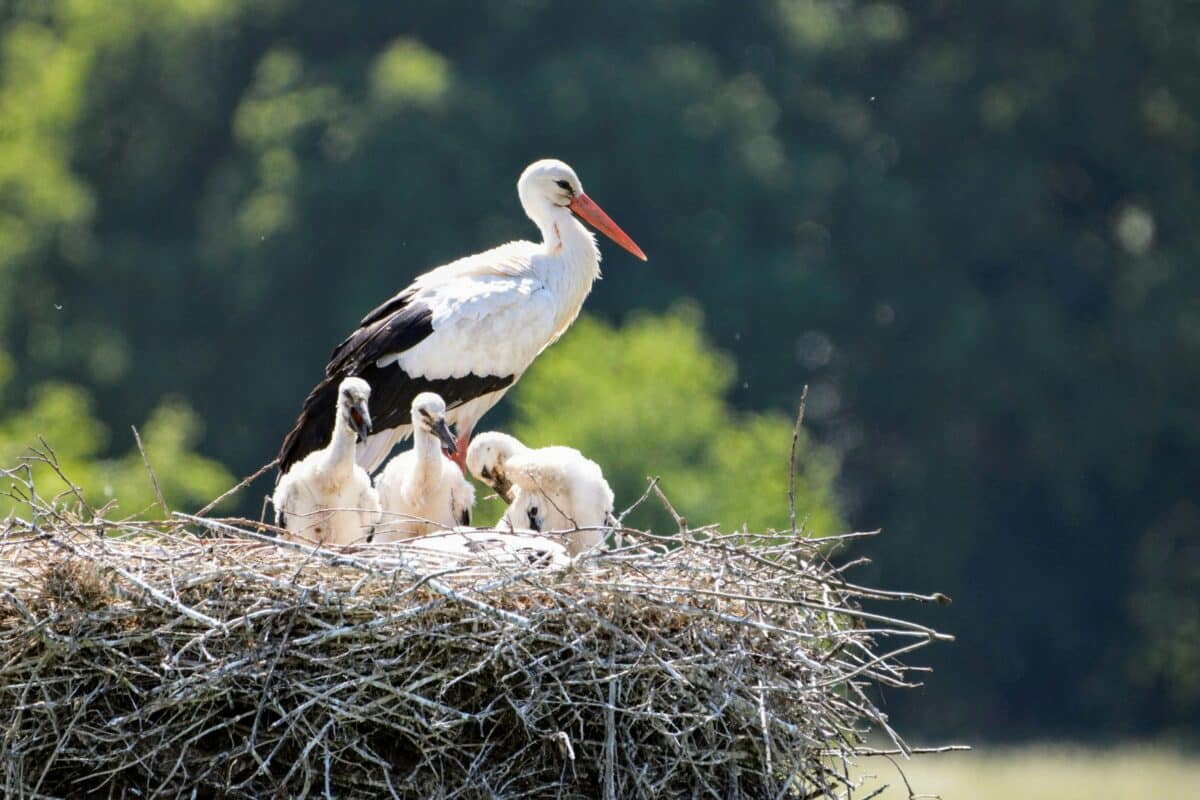It is almost unreal to believe that White Storks have reappeared after 600 years. They have been living in restoring habitats since the 1400s. This specie is finally stable enough to live in the wild, thanks to various conservation and rehabilitation projects. Now they can roam in their natural habitat!

The protection of Storks

Initiatives such as the White Stork Project have been pivotal in reintroducing these birds to the UK. This project, a collaborative effort involving several organizations including the Durrell Wildlife Conservation Trust and the Knepp Estate in West Sussex, aims to establish a sustainable population of white storks in southern England.
The first Stork babies

The White Stork project announced in 2020, that wild storks in West Sussex have hatched their own babies. The babies were seen on a private estate for stork conservation.
The Stork parents

The female bird is originally from Poland but was transported to Knepp, the conservation site. The male is suspected to be one of the 20 visiting Storks coming to the UK each year. The same pair had a failed breeding attempt just a year ago.
Make-shift home for the Storks

Knepp has predator-proof pens where storks can live. The property also houses two other breeding pairs. Storks from Poland and Northern France has been released in the pens to establish local breeding populations.
Reintroducing storks
The reintroduction of Storks in their natural habitat is due to
- Breeding success
- Release programs where several young storks which were raised in captivity are released in the wild.
- Restoring habitats to ensure sufficient food supply and nesting sites.
Reappearance after 600 years

The first appearance of a Stork in its natural habitat was in June 2024. It has been 600 years since storks were spotted in the wild. This reappearance is largely due to concerted conservation efforts. Residents of Cheshire were very excited to see the majestic bird flying over the county again. Historically, white storks were common in Britain, but they disappeared in the 15th century, primarily due to hunting and habitat loss.
Other domains for Storks
Though extinct in England for all these years, the white stork is considered a species of least concern, and can be found as far afield as Kenya, Palestine, Turkey, and Kazakhstan.
Stork diet

The scientific name for a Stork is Ciconia ciconia. You will spot them in wetlands, riverbanks, meadows, and floodplains. They feed on small fish, insects, and amphibians which are bounty in these areas. Storks also eat earthworms, eggs and tiny mammals. Storks are opportunistic feeders and stay in areas where there is an abundance of food. Their diet can vary based on seasonal availability and regional differences in prey populations.
Migration habits

White storks are migratory birds, traveling long distances between their breeding grounds in Europe and their wintering grounds in Africa. Some storks can migrate over 12,000 miles round trip.
Thermal Soaring
During migration, storks use thermal updrafts to soar and glide, conserving energy over long distances. They can cover hundreds of kilometers in a single day using this method.
Symbolism of Storks
In many cultures, storks are symbols of good luck, fertility, and birth. The famous myth that storks deliver babies originates from European folklore, there was also an animated film produced about Storks delivering babies.
Nesting

Storks often build large nests made of sticks on tall structures like trees, rooftops, chimneys, and specially constructed platforms. These nests can be used and added to for many years as the Storks build and improve their “home” which can become quite massive.
Stork Communication
Storks are known for their unique way of communicating through bill-clattering. They snap their bills rapidly to produce a loud, rattling sound, often used in courtship displays and to communicate with their mates.
Lifespan of the birds
In the wild, white storks can live up to 20-30 years, although many factors such as predation, human activities, and environmental conditions can affect their lifespan.
Look at live Storks

Storks are monitored live at the Knepp Estate where you can Take a look at the majestic birds in their nest.
You may also like
Join our Forum for free today!

- Animals Are Beating The Heat In Florida - June 25, 2024
- Watch Rare Sighting: Alberta’s White Moose - June 24, 2024
- Meet One Of The Rarest Wildcats – A Jaguarundi - June 23, 2024
